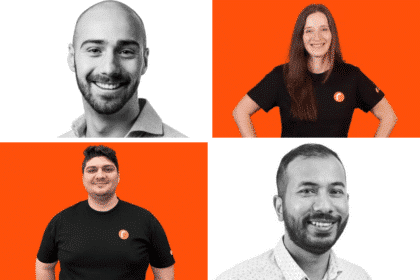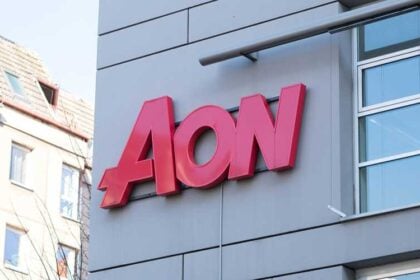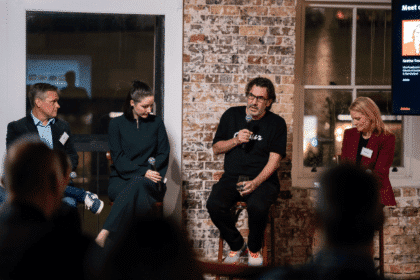Pedestrian.TV has spent the past decade bursting out of the woodwork and into the mainstream media landscape, gathering hoards of loyal followers in the process. According to co-founder Chris Wirasinha, Pedestrian’s audience is “significantly bigger than any other Australian youth focused publishing brand”, so B&T caught up with Wirasinha to chat about what it takes to make it as a modern media brand.
It comes ahead of Wirasinha’s appearance at PRIA’s national conference where he joins an impressive line-up of speakers including the global chairman of Ogilvy PR Christopher Graves to talk about communication innovation. The conference is in Sydney on the 14 November and you can find out more information here.
Wirasinha co-founded Pedestrian when he was 22 and has helped lead it to becoming Australia’s largest youth focused publishing brand. Over the past 10 years Pedestrian has grown from two people working out of a bedroom to a staff of 42 across offices in Sydney, Melbourne and Brisbane.
Why is Pedestrian.TV successful? What’s the key ingredient that helped when you launched and keeps you pertinent now?
When we first launched in 2005 there was just myself and my co-founder Oscar Martin and the ingredients that kept us going was hustling and saying yes to almost everything.
What keeps us pertinent now over 11 years later is the brilliant team that we’ve been privileged enough to work with who still embody that entrepreneurial drive that we had on day one.
How does Pedestrian stay relevant when audiences tend to be less brand-loyal than they used to be?
I don’t think it’s fair to say that audiences are fickle and less brand loyal than they were previously. Audiences have more choices than they’ve ever had before however they will keep gravitating to brands that are consistent and authentic in their product and deliver on their promises.
Consistency across output is something that we’re very focused on across Pedestrian whether across our editorial content or our desire to over-deliver for our clients.
When it comes to advertisers, how do you continue to offer appropriate client solutions to help reach your audiences?
Pedestrian’s audience is huge and significantly bigger than any other Australian youth focused publishing brand. Our job now is helping brands leverage our audience to best connect with our audience. We don’t just want to deliver an advertising solution for our clients but rather help them create a piece of culture that will entertain and at times educate our audience.
Brands have a huge opportunity to not just badge and attach themselves around content and culture but to actually be the ones creating it.
What’s the hardest lesson you’ve learned since launching the media brand?
The biggest learning curve has been the new personal and management challenges that we have to take on at all the different levels of the business.
Managing a start-up based out of your house is very different to a small team or a team of 45. You need to keep adapting, learning and you’ll definitely make mistakes along the way.
What does the future of content look like?
Content at the moment is very much shaped by the social media platforms and search engines that it’s distributed through. Content will naturally flow to the platforms with the greatest audience and how that content looks will be dictated by what those platforms want to achieve.
We’re seeing a huge push towards video and also the growth of live platforms which align with Facebook’s broader business ambitions. If you look further in the future this push will ultimately take content directly on to our body through wearables, projected/broadcast throughout our homes through better connected homes and devices and ultimately also start to bridge the divide between real and virtual worlds.
What does the future of advertising look like?
The future of advertising will become more participatory and give consumers the opportunity to step inside the brand. Advertisers will be looking at digital worlds and VR to allow people to trial and experience products and worlds so that they can get closer to a product without having to go to physical retail locations.
An evolved version of the current channel mix (likely sans physical magazines and newspapers) will continue to play a part in driving awareness but stay tuned for virtual flagship stores, emulated events and even completely digital branded worlds.
What is crucial for founders of new media platforms to know in this day and age?
Modern media brands are disaggregated. It’s no longer an option to simply focus on your website. Your content strategy needs to be specific for each individual channel that you’re looking to engage your audience across. The way content looks, feels and sounds is different across each platform.
What do you know now that you wish you knew upon starting Pedestrian?
Our initial insight in February 2005 was that there wasn’t anywhere to watch niche video content all about the things that we loved. So our solution was to create a media brand. Meanwhile in the very same month 12,000kms away in California, three people had a similar insight and launched YouTube.
That being said we’ve been very fortunate and built a brand which is truly loved and so it’s not like we’re beating ourselves up about it!
What’s the best bit of advice you have for anyone working in media or marketing today?
The best staff we have aren’t the ones who wait for promotions, opportunities or to be told what to do. They’re the ones who see an area that they can help and are proactive to take on that responsibility.
Ultimately they often find themselves the ones whose career outgrow others simply because when it comes time to take on bigger responsibilities they’re the ones already doing things beyond their roles and so the rewards naturally gravitate to them.
To hear more from the Pedestrian co-founder on how brands can be most effective in working with new media platforms and how to excel in creating and spreading content, register for PRIA’S National Conference on Innovation Communication.








